Dutch police have a new trick to measure and catch hot-rod e-bikes
Dutch police have a new weapon in their battle against high-speed and high-power electric bicycles: a roadside testing platform to catch hot-rodded e-bikes.
The device is similar to a dynamometer typically used to measure the performance of vehicles like cars and motorcycles. In this case though, the Dutch police have rolled out nearly 250 smaller versions that are appropriately sized for doing tests on bicycles.
To operate the test, an officer first locks the bike’s front wheel into the machine and then mounts the e-bike to pedal it up to its top speed, checking when the motor cuts out.
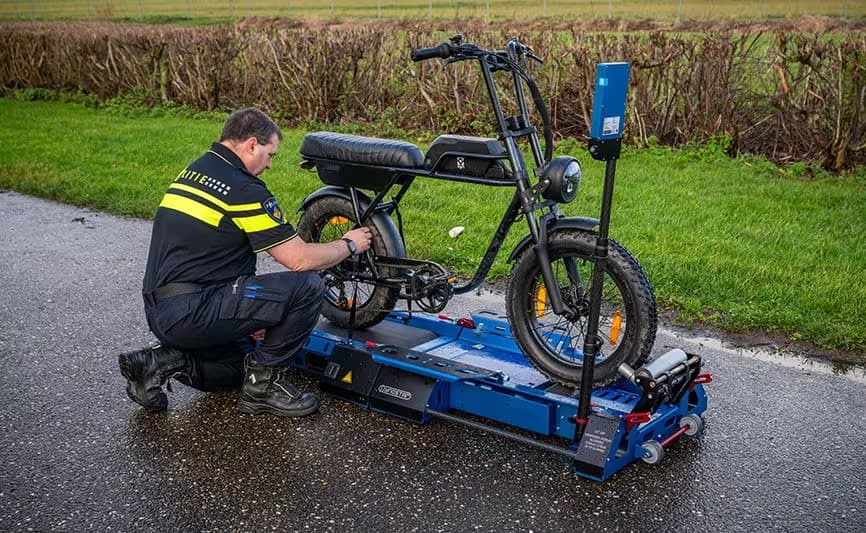
After yesterday’s news about California’s proposed law requiring a special e-bike driver’s license, the concept of police doing roadside bicycle power checks likely comes as a bit of a double whammy for anyone who sees e-bikes as a Wild West free from regulation.
But unlike California, which enjoys the higher US e-bike power rating of up to 750W (1 horsepower), European e-bikes are limited to a relatively paltry 250W by comparison.
While that’s still enough power to move an e-bike around – and in fact, is around the amount of power that a healthy individual can produce with their own legs for a reasonable amount of time – it’s still significantly less sprightly than more powerful motors. That’s led to a widespread phenomenon of riders ‘hacking’ their European electric bikes to squeeze more power out of their motors.
Major e-bike motor manufacturers such as Bosch have developed ways to discourage such modifications, though many riders opt for motors from less scrupulous manufacturers that don’t hold themselves to the same standards regarding local regulation. Other e-bike makers are slipping in models that can exceed the speed limit without modification.
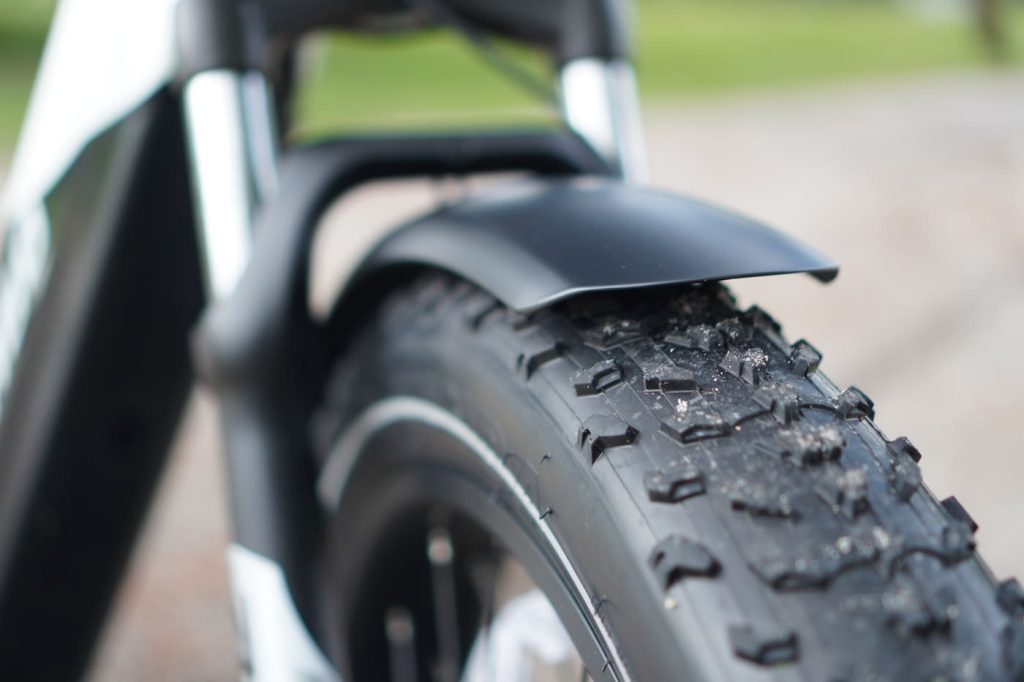
Power is a tricky thing to measure and even harder to legislate (constant vs peak power?), unlike speed, which is fairly cut and dry. In Europe, e-bikes are permitted to reach 25 km/h (15.5 mph) under pedal assist, at which point the motor is required to cut out. E-bikes that can reach higher speeds under motor power or that have throttles to allow motor use without pedaling are generally illegal in most areas.
Speed pedelecs, somewhat similar to Class 3 e-bikes in the US, are allowed in some areas of Europe and are permitted to reach higher speeds of 45 km/h (28 mph), but usually require license plates and registration, making them significantly less popular compared to 25 km/h e-bikes.
In the Netherlands, Dutch police have found that the majority of e-bikes that are in excess of local performance limits are fat tire electric bikes. Those e-bikes, which have wider tires similar to scooters and motorbikes, have become more popular among younger riders in the Netherlands.
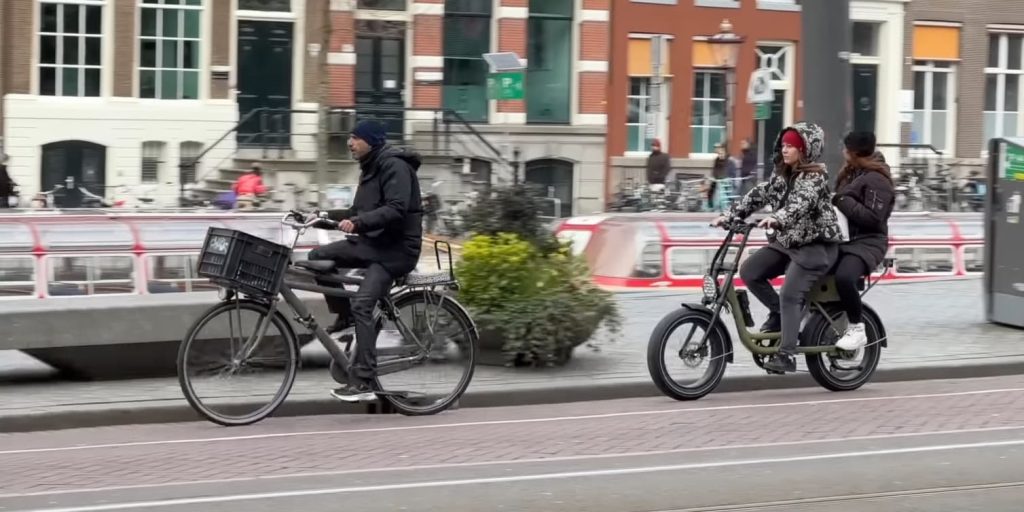
via: GCN, leading image credit: Dutch Police
Also, and just for fun, I asked an AI program to generate some images of Dutch police officers inspecting a fat tire e-bike.
None of them were great, but they’re all kind of fun in a weird way. So here they are for your viewing pleasure.

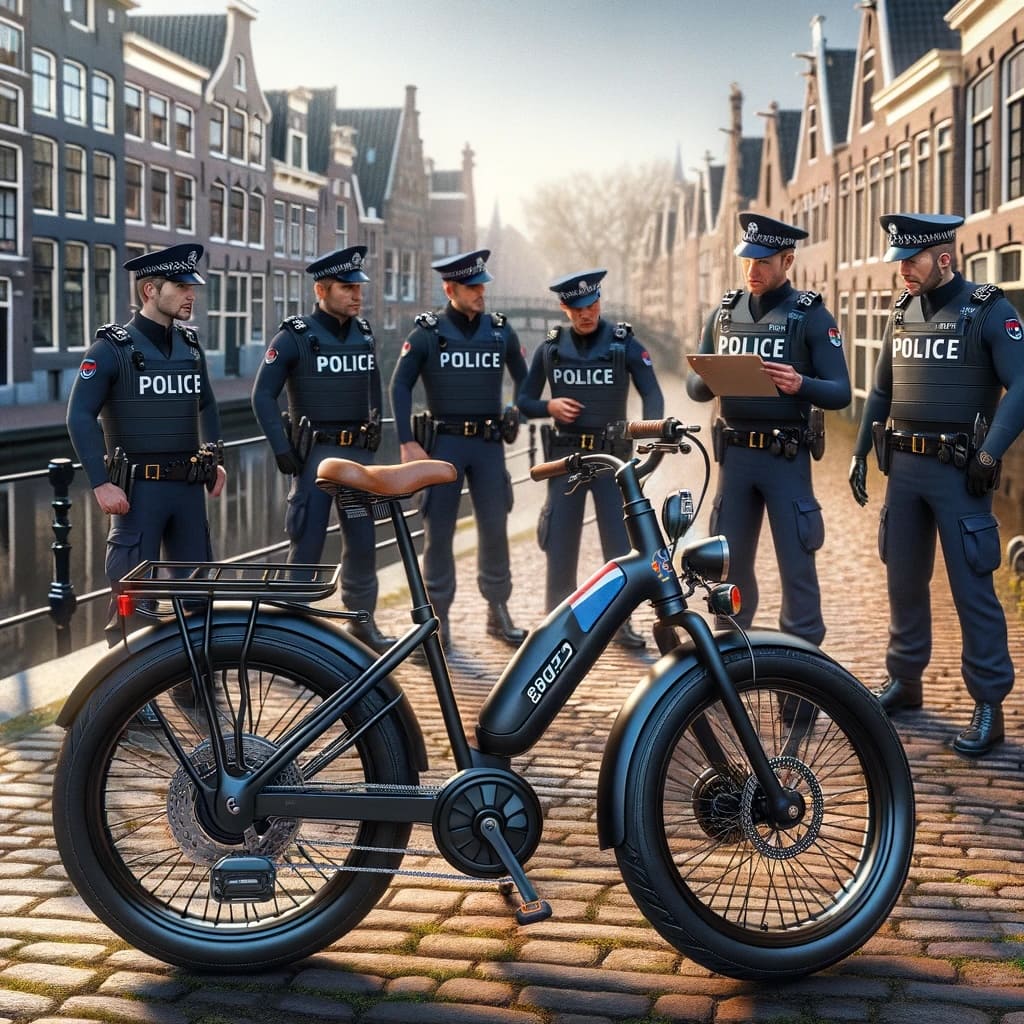
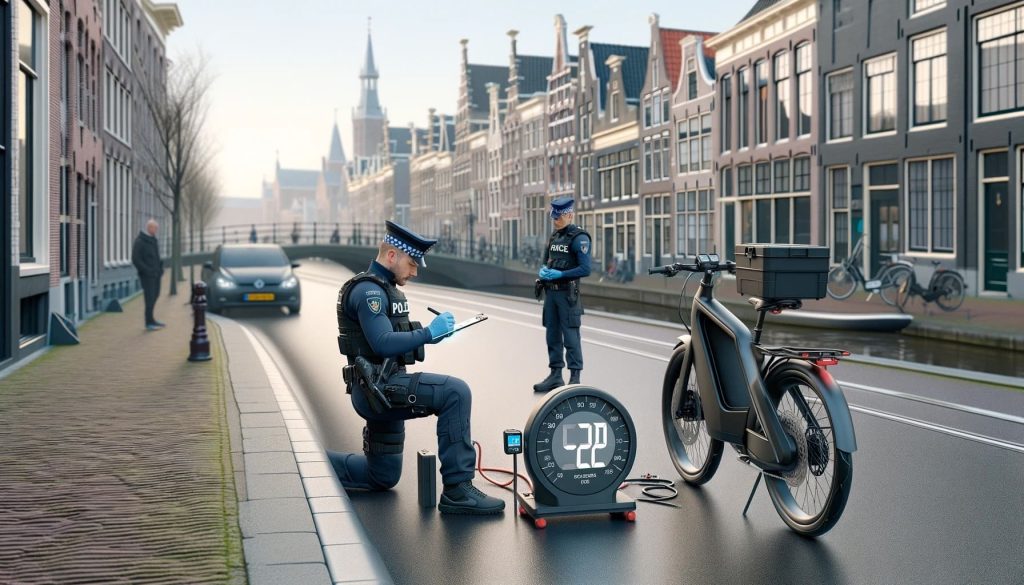
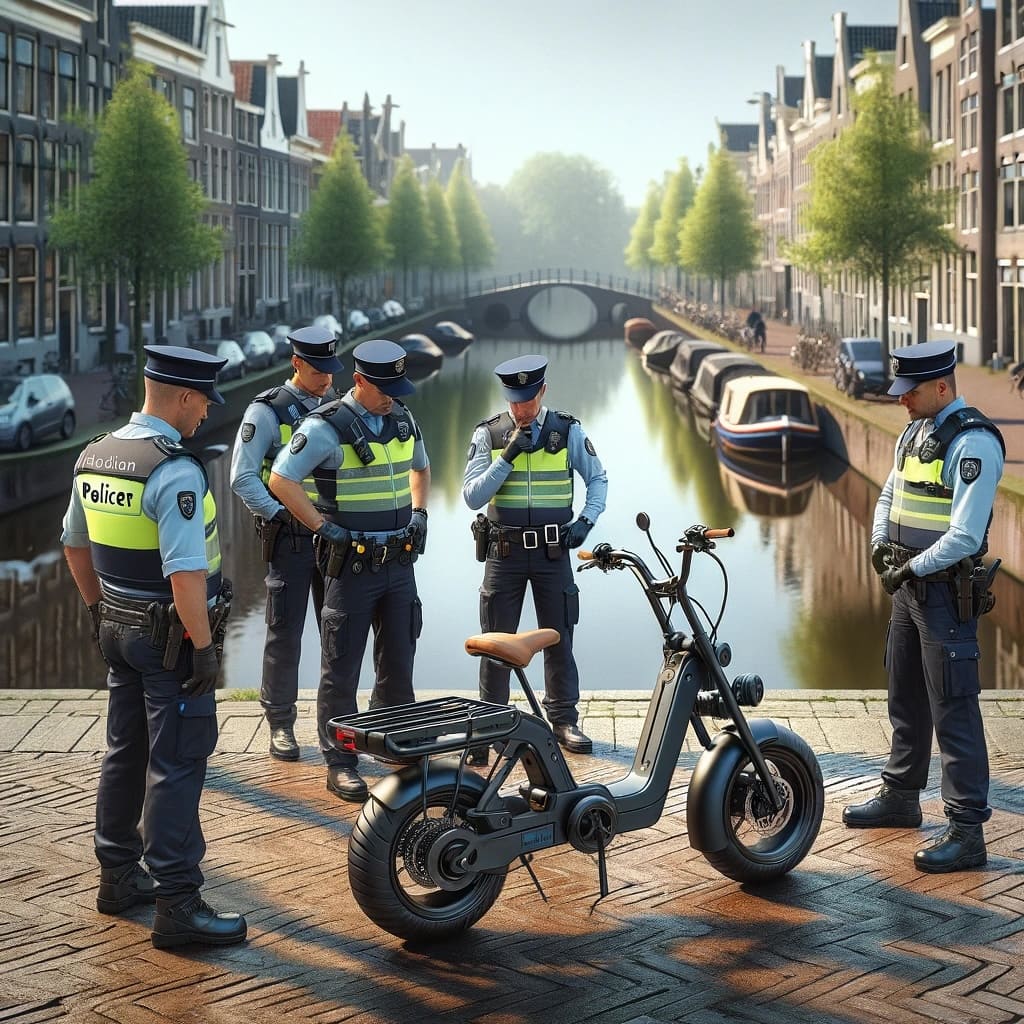
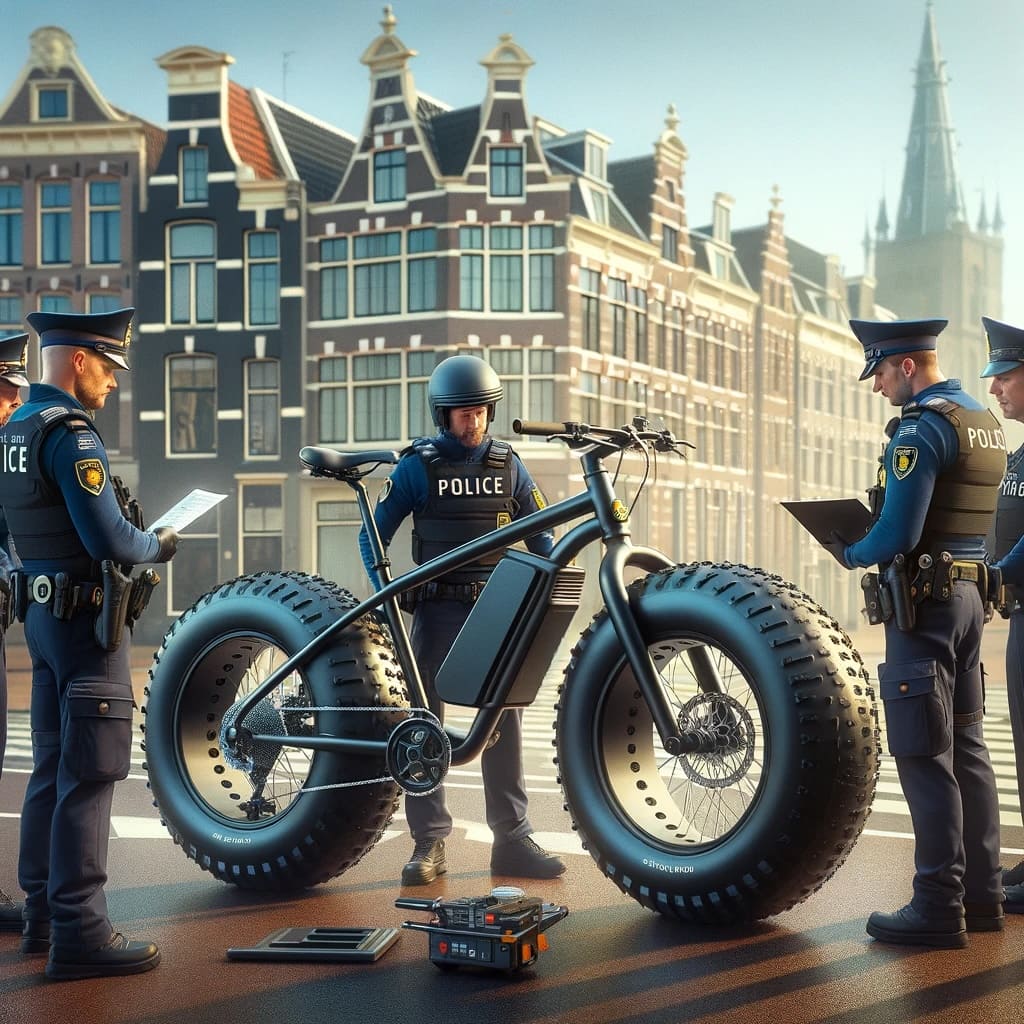


FTC: We use income earning auto affiliate links. More.
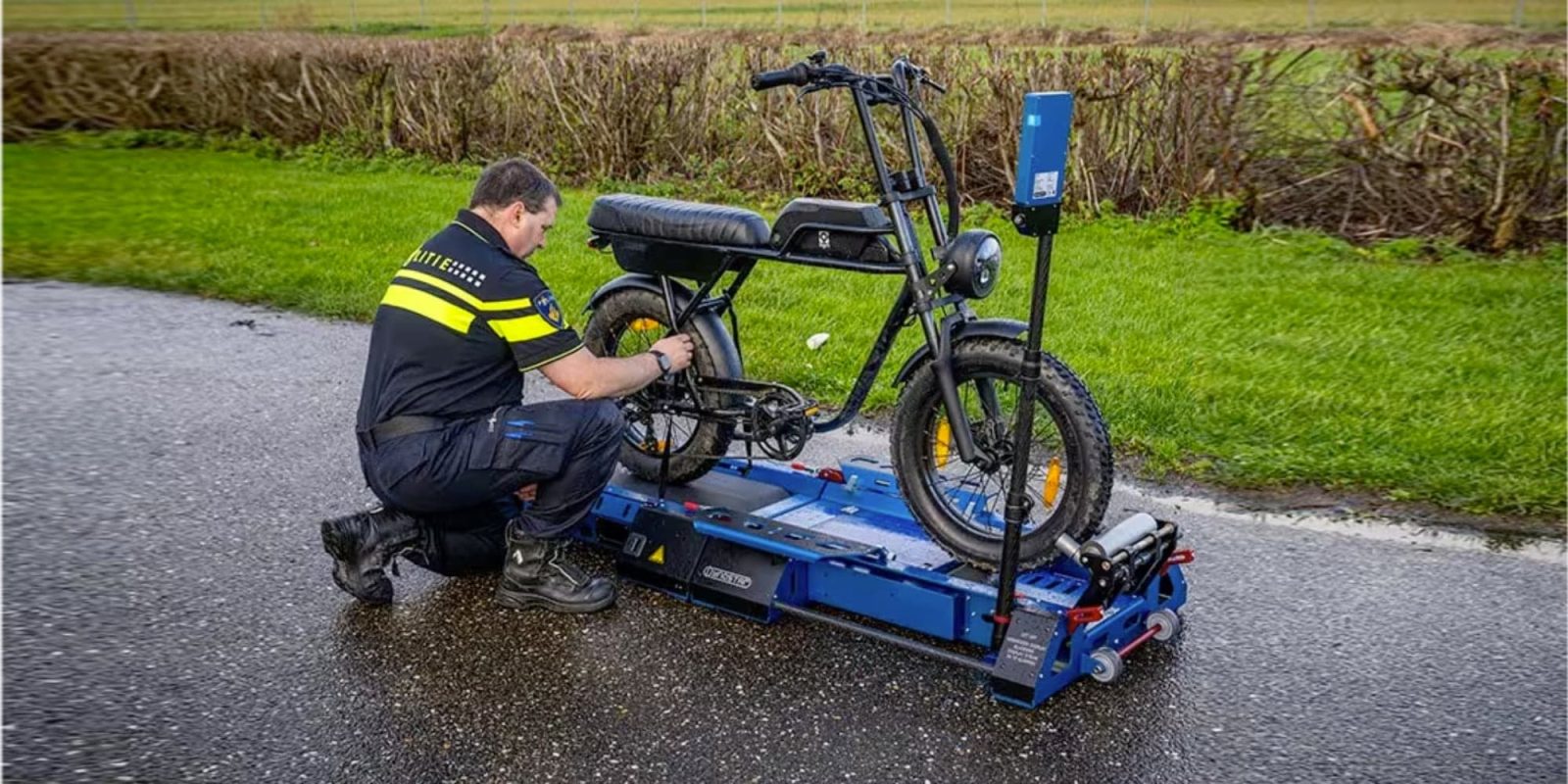
Dutch police have a new weapon in their battle against high-speed and high-power electric bicycles: a roadside testing platform to catch hot-rodded e-bikes.
The device is similar to a dynamometer typically used to measure the performance of vehicles like cars and motorcycles. In this case though, the Dutch police have rolled out nearly 250 smaller versions that are appropriately sized for doing tests on bicycles.
To operate the test, an officer first locks the bike’s front wheel into the machine and then mounts the e-bike to pedal it up to its top speed, checking when the motor cuts out.

After yesterday’s news about California’s proposed law requiring a special e-bike driver’s license, the concept of police doing roadside bicycle power checks likely comes as a bit of a double whammy for anyone who sees e-bikes as a Wild West free from regulation.
But unlike California, which enjoys the higher US e-bike power rating of up to 750W (1 horsepower), European e-bikes are limited to a relatively paltry 250W by comparison.
While that’s still enough power to move an e-bike around – and in fact, is around the amount of power that a healthy individual can produce with their own legs for a reasonable amount of time – it’s still significantly less sprightly than more powerful motors. That’s led to a widespread phenomenon of riders ‘hacking’ their European electric bikes to squeeze more power out of their motors.
Major e-bike motor manufacturers such as Bosch have developed ways to discourage such modifications, though many riders opt for motors from less scrupulous manufacturers that don’t hold themselves to the same standards regarding local regulation. Other e-bike makers are slipping in models that can exceed the speed limit without modification.

Power is a tricky thing to measure and even harder to legislate (constant vs peak power?), unlike speed, which is fairly cut and dry. In Europe, e-bikes are permitted to reach 25 km/h (15.5 mph) under pedal assist, at which point the motor is required to cut out. E-bikes that can reach higher speeds under motor power or that have throttles to allow motor use without pedaling are generally illegal in most areas.
Speed pedelecs, somewhat similar to Class 3 e-bikes in the US, are allowed in some areas of Europe and are permitted to reach higher speeds of 45 km/h (28 mph), but usually require license plates and registration, making them significantly less popular compared to 25 km/h e-bikes.
In the Netherlands, Dutch police have found that the majority of e-bikes that are in excess of local performance limits are fat tire electric bikes. Those e-bikes, which have wider tires similar to scooters and motorbikes, have become more popular among younger riders in the Netherlands.

via: GCN, leading image credit: Dutch Police
Also, and just for fun, I asked an AI program to generate some images of Dutch police officers inspecting a fat tire e-bike.
None of them were great, but they’re all kind of fun in a weird way. So here they are for your viewing pleasure.







FTC: We use income earning auto affiliate links. More.
